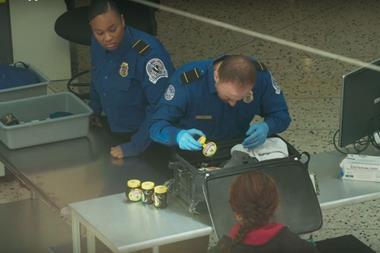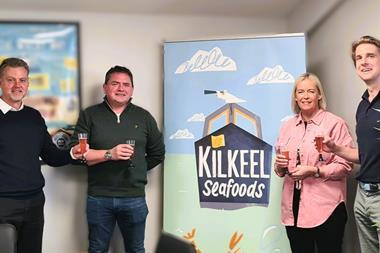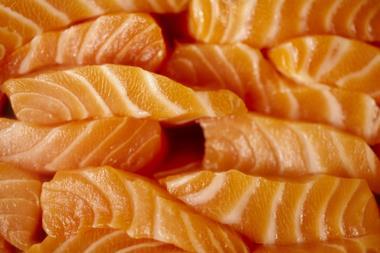41 (37) Princes fish
Sales: £147.8m (–2.9%)
Launched: 1880
Volume sales of Princes’ ambient fish have held up well, with 1% growth, although value has fallen 2.9%. The brand debuted a flavour-infused tuna range last year and became the first major canned fish company to put the MSC logo on pack. Whether sustainability will still be centre-stage for Princes in 2011 remains to be seen – the brand took a public beating in Hugh Fearnley-Whittingstall’s Fish Fight.
42 (39) John West fish
Sales: £145.4m (–2.5%)
Launched: 1892
Fish has not fared well in this year’s list, with Young’s, Birds Eye, Princes and John West all showing declines. But John West can seek comfort in the fact that it has closed the gap on Princes from two places last year to one this year. With the impact of its innovative No Drain concept perhaps beginning to wane, it could be time for John West to pull something else out of the bag.
43 (44) Maltesers
Sales: £142.5m (+4.5%)
Launched: 1934
The Malteaster bunny helped value sales of Maltesers rise 4.5% despite a 2.7% drop in volume, and a £500,000 marketing spend looks set to make the bunny an even bigger part of Mars’ Easter line-up this year. Maltesers themselves, meanwhile, made their milkshake debut when they appeared as part of the new Shake ‘n’ Snack range from Mars, a blend of milkshake and chocolate treat.
44 (50) Ribena
Sales: £140.2m (+10.7%)
Launched: 1938
Ribena reversed two years of declining sales to storm six places up the table, boosting brand value by a cool £14m.
“This has been achieved by a combination of NPD, a packaging refresh and engaging our consumers with exciting marketing campaigns,” says GSK category manager Bryony Pemberton.
Ribena Raspberry was launched last March in a 500ml bottle and 288ml carton. The NPD built on the success of the strawberry flavour, says Pemberton and has already generated incremental sales of £2m. Later in the year Ribena ran the Pick Your Own text-to-win promotion giving consumers the chance to pocket £1,000. This was supported by a £2.5m campaign including TV and billboard ads.
GSK will quadruple its Ribena marketing spend in 2011, with £11m slated for national campaigns. And the brand isn’t easing off on product launches either. Last month it unveiled Ribena Sparkling, available in 500ml bottles in blackcurrant and raspberry flavours. It will be supported by an advertising campaign in May.
GSK will also be closely watching the performance of Juiced Up. Aimed firmly at the lunchbox market, the drink – 85% natural juice and 15% water – meets government guidelines for school food and contains one of the recommended five-a-day portions of fruit or vegetables.
But the brand has a slightly chequered history of healthy NPD. Pure Juice – which Ribena claimed was the biggest piece of NPD in the brand’s 70-year history when it was launched in 2008 – was quietly withdrawn along with the ill-fated Toothkind in February 2009.
45 (49) Weetabix
Sales: £136.5m (+5.2%)
Launched: 1932
Britain’s top-selling cereal has reversed the 0.9% value decline in last year’s rankings, thanks in no small part to Weetabix Chocolate. Launched in July 2010, it was the first chocolate breakfast cereal to pass the Ofcom test, so it can be advertised during kids’ TV programmes. It has been a major factor in the growth of Weetabix, selling three million packs in its first six months.
Britain's 100 Biggest Brands 2011
Sales: £147.8m (–2.9%)
Launched: 1880
Volume sales of Princes’ ambient fish have held up well, with 1% growth, although value has fallen 2.9%. The brand debuted a flavour-infused tuna range last year and became the first major canned fish company to put the MSC logo on pack. Whether sustainability will still be centre-stage for Princes in 2011 remains to be seen – the brand took a public beating in Hugh Fearnley-Whittingstall’s Fish Fight.
42 (39) John West fish
Sales: £145.4m (–2.5%)
Launched: 1892
Fish has not fared well in this year’s list, with Young’s, Birds Eye, Princes and John West all showing declines. But John West can seek comfort in the fact that it has closed the gap on Princes from two places last year to one this year. With the impact of its innovative No Drain concept perhaps beginning to wane, it could be time for John West to pull something else out of the bag.
43 (44) Maltesers
Sales: £142.5m (+4.5%)
Launched: 1934
The Malteaster bunny helped value sales of Maltesers rise 4.5% despite a 2.7% drop in volume, and a £500,000 marketing spend looks set to make the bunny an even bigger part of Mars’ Easter line-up this year. Maltesers themselves, meanwhile, made their milkshake debut when they appeared as part of the new Shake ‘n’ Snack range from Mars, a blend of milkshake and chocolate treat.
44 (50) Ribena
Sales: £140.2m (+10.7%)
Launched: 1938
Ribena reversed two years of declining sales to storm six places up the table, boosting brand value by a cool £14m.
“This has been achieved by a combination of NPD, a packaging refresh and engaging our consumers with exciting marketing campaigns,” says GSK category manager Bryony Pemberton.
Ribena Raspberry was launched last March in a 500ml bottle and 288ml carton. The NPD built on the success of the strawberry flavour, says Pemberton and has already generated incremental sales of £2m. Later in the year Ribena ran the Pick Your Own text-to-win promotion giving consumers the chance to pocket £1,000. This was supported by a £2.5m campaign including TV and billboard ads.
GSK will quadruple its Ribena marketing spend in 2011, with £11m slated for national campaigns. And the brand isn’t easing off on product launches either. Last month it unveiled Ribena Sparkling, available in 500ml bottles in blackcurrant and raspberry flavours. It will be supported by an advertising campaign in May.
GSK will also be closely watching the performance of Juiced Up. Aimed firmly at the lunchbox market, the drink – 85% natural juice and 15% water – meets government guidelines for school food and contains one of the recommended five-a-day portions of fruit or vegetables.
But the brand has a slightly chequered history of healthy NPD. Pure Juice – which Ribena claimed was the biggest piece of NPD in the brand’s 70-year history when it was launched in 2008 – was quietly withdrawn along with the ill-fated Toothkind in February 2009.
45 (49) Weetabix
Sales: £136.5m (+5.2%)
Launched: 1932
Britain’s top-selling cereal has reversed the 0.9% value decline in last year’s rankings, thanks in no small part to Weetabix Chocolate. Launched in July 2010, it was the first chocolate breakfast cereal to pass the Ofcom test, so it can be advertised during kids’ TV programmes. It has been a major factor in the growth of Weetabix, selling three million packs in its first six months.
Britain's 100 Biggest Brands 2011








No comments yet